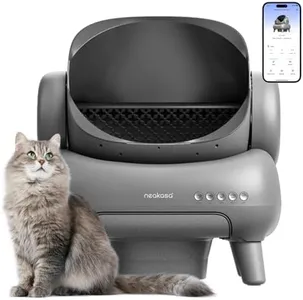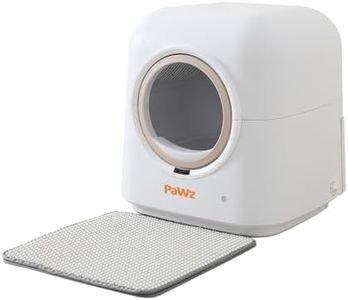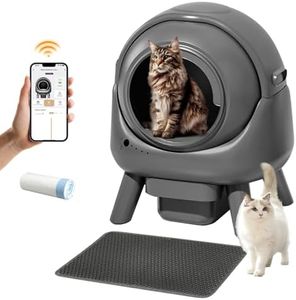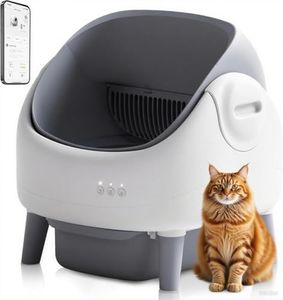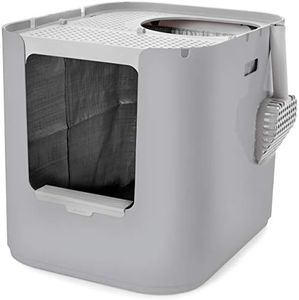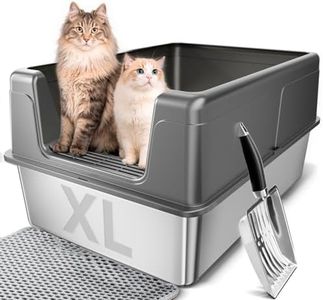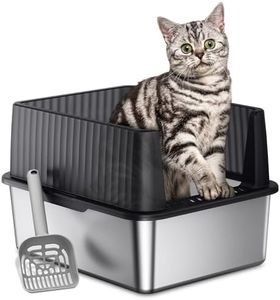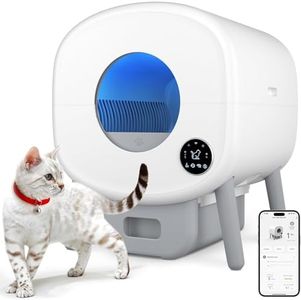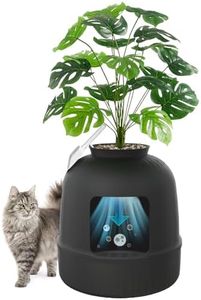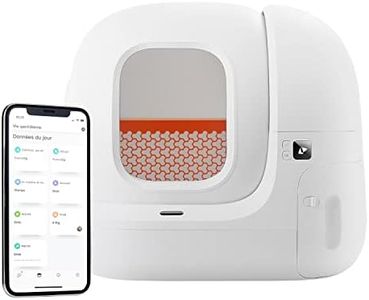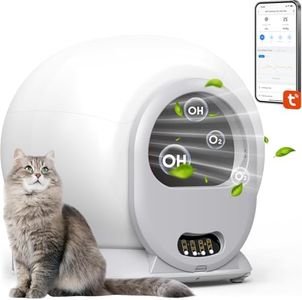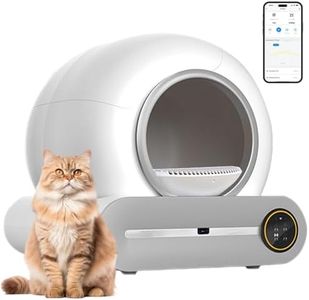We Use CookiesWe use cookies to enhance the security, performance,
functionality and for analytical and promotional activities. By continuing to browse this site you
are agreeing to our privacy policy
10 Best Cat Litter Boxes
From leading brands and best sellers available on the web.Buying Guide for the Best Cat Litter Boxes
Choosing the right cat litter box is important for both your cat’s comfort and your own convenience. There are many styles and features available, so it's good to start by thinking about your cat's habits, your living space, and how much effort you want to put into maintenance. A well-matched litter box can help prevent messes, encourage good bathroom habits in your cat, and even make life a little easier for you.SizeThe size of a litter box refers to how much space your cat has to move around inside it. This is important because a box that's too small can make your cat feel cramped, which might cause them to avoid using it or kick litter outside the box. Generally, smaller boxes work for kittens or very tiny spaces, while medium to larger boxes give adult cats more room. If you have a larger breed or multiple cats, consider an extra-large box. To pick the right size, think about your cat’s current size and whether they’re likely to grow, plus how much room you have at home.
Entry TypeEntry type refers to how your cat gets into the litter box: open top, top-entry, or front-entry. Open top boxes are the most traditional and easy for cats to use, especially those that are old or have mobility issues. Top-entry boxes help contain litter and odors but can be challenging for kittens or less agile cats. Front-entry boxes with a lower entrance are good for older cats or those with joint problems. Consider how agile your cat is and whether you're dealing with litter being tracked out of the box when making this choice.
Covered vs. UncoveredSome litter boxes come with a cover or hood, while others are open. Covered boxes offer more privacy for cats that like it and can contain odors better, which is good in small living spaces. However, some cats feel trapped or uncomfortable in covered boxes, and they can be harder to clean. Open boxes give better airflow and are usually preferred by most cats. Think about your cat's behavior—if they like privacy or tend to scatter litter—and your own preference for controlling smell when deciding.
MaterialMost litter boxes are made from plastic, but the thickness and finish can vary. A thicker, sturdier plastic resists cracks and holds up longer, while smooth surfaces make cleaning easier and prevent odor buildup. There are also disposable and biodegradable options for short-term use. When choosing, look for materials that are easy to scrub and will last through regular use, especially if you don’t want to replace your box often.
Ease of CleaningSome litter boxes are designed with features that make scooping and cleaning easier, like slide-out trays or rounded edges that prevent waste from sticking. Self-cleaning boxes use mechanical or automatic systems to separate waste, reducing your daily chores. If you want the least amount of maintenance, these features are worth considering. Otherwise, pick a box with smooth corners and minimal crevices.
Height of SidesThe height of the litter box sides helps contain litter and urine. Low sides are easier for kittens, older, or sick cats to step over, but they might allow more litter to be pushed or kicked out. High-sided boxes are better at keeping messes contained, especially for cats who like to dig vigorously, but can be difficult for less agile cats. Match the side height to your cat’s age, health, and litter habits for best results.
